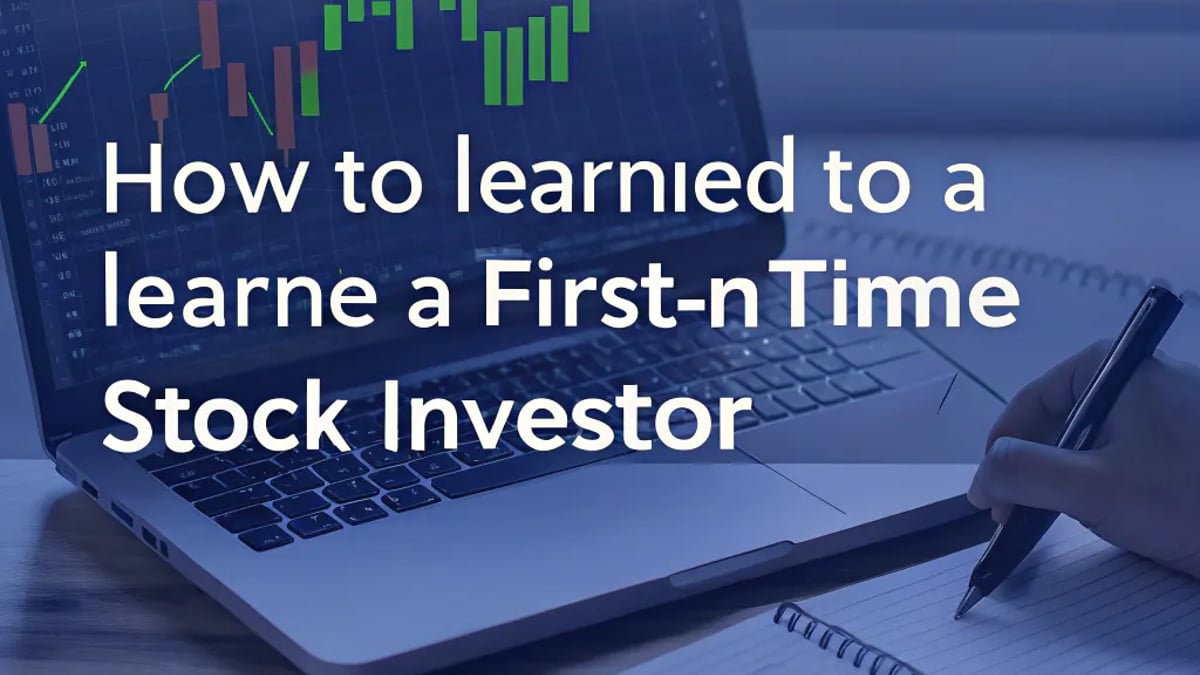
That first plunge into the stock market feels a bit like learning to swim—exciting, terrifying, and occasionally leaving you gasping for air. Last January, I finally took the leap after years of keeping my money in savings accounts earning practically nothing. Now, twelve months later, I'm reflecting on this financial journey with its unexpected twists and valuable lessons.
The Decision to Start Investing
The question I wrestled with most was timing. "Is this a bad time to start investing?" I asked everyone from my financially-savvy uncle to complete strangers on Reddit. The market seemed high, and warnings of corrections were everywhere.
What finally convinced me was a comment in a Fidelity Investments forum: "If your time horizon is 30 years, then you have very little to worry about." This resonated with me—I wasn't looking to get rich quick, but rather to build wealth gradually for retirement.
The truth is, perfect timing is impossible. As Howard Marks of Oaktree Capital noted in his memo "I Beg to Differ," even professional investors can't consistently predict market movements. What matters more is getting started and staying consistent.

What I Got Right: Starting Despite Fears
My best decision was simply beginning. Despite my anxiety about market highs, I opened a brokerage account and committed to investing a fixed amount monthly. This approach—dollar-cost averaging (DCA)—meant I wouldn't need to obsess over finding the "perfect" entry point.
Looking back, I'm glad I didn't wait for the "ideal moment" that might never have come. The Financial Conduct Authority lists this as one of their golden rules of investing: time in the market typically beats timing the market.
My Investment Strategy (Or Lack Thereof)
I started with what I thought was a solid plan: invest in companies I understood and used regularly. This led to my first purchases—Apple, Amazon, and a few shares of my favorite coffee chain.


What I Got Wrong: The "Familiarity Trap"
This approach wasn't terrible, but it created a dangerously undiversified portfolio heavily weighted toward tech and consumer discretionary stocks. When tech took a hit in March, my portfolio dipped nearly 15% in a week. That was a gut-check moment.
I hadn't properly understood risk diversification. As Howard Marks pointed out in his memo, many investors in the dot-com bubble "lost almost all of their money in stocks of companies that 'everyone knew' were great." I was making a similar mistake, albeit on a smaller scale.
The Emotional Rollercoaster
Nothing prepared me for the emotional aspect of investing. The first time my portfolio dropped 5% in a day, I nearly panic-sold everything. The second time it happened, I felt queasy but held steady. By the third time, I'd learned to stop checking my account so frequently.
What I Got Right: Developing Emotional Discipline
Gradually, I developed what Morgan Stanley calls "emotional discipline"—the ability to stick with your investment plan despite market volatility. According to their article on top investor mistakes, emotional reactions like panic-selling during downturns are among the most common errors investors make.
I'm proud that I eventually learned to see market dips as potential buying opportunities rather than disasters. This mindset shift didn't happen overnight, but it's perhaps the most valuable skill I developed all year.
How Much Should I Actually Invest?
One question I struggled with was allocation—how much of my savings should go into stocks? Initially, I was too conservative, investing only tiny amounts I "wouldn't mind losing."
What I Got Wrong: Playing Too Safe
This cautious approach meant I wasn't putting enough capital to work. After building an emergency fund covering six months of expenses, I should have been more aggressive with my remaining savings.
T. Rowe Price suggests that younger investors with longer time horizons can generally afford to allocate more to equities. I eventually adjusted my strategy to invest about 20% of my monthly income, which still feels comfortable while being meaningful enough to build wealth over time.
The Tax Situation I Didn't Anticipate
Around October, I sold some shares that had performed well, thinking I'd lock in profits. What I hadn't properly researched was the tax implication.
What I Got Wrong: Ignoring Tax Efficiency
I hadn't opened a tax-advantaged account like an IRA before starting to invest. This meant all my gains were subject to capital gains tax. Additionally, my short-term trades (held less than a year) were taxed at my regular income rate rather than the lower long-term capital gains rate.
T. Rowe Price points out that tax planning is crucial for investors, noting that required minimum distributions (RMDs) and other tax considerations can significantly impact returns. While RMDs won't affect me for decades, the principle of tax-efficient investing is relevant at any age.
Should I Have Used a Financial Advisor?
One question I still wrestle with: would a financial advisor have helped me avoid some mistakes?
What I'm Still Figuring Out: The Value of Professional Guidance
Morgan Stanley suggests that working with a financial advisor can help investors avoid common mistakes, especially during volatile markets. While I've enjoyed the learning process of managing my own investments, I wonder if professional guidance might be worth considering as my portfolio grows.
For now, I'm continuing my self-education while remaining open to seeking professional advice in the future.
What Would I Tell a New Investor?
If you're hesitating about starting your investment journey, here's what my first year taught me:
- Just start—even with small amounts. Perfect timing is a myth.
- Diversify more than feels necessary. My tech-heavy portfolio taught me this the hard way.
- Expect emotional reactions to market movements and develop strategies to manage them.
- Consider tax implications before making investment decisions.
- Learn continuously—the investing world is complex but fascinating.
The most important lesson? Patience. As that Reddit comment reminded me, with a long time horizon, short-term volatility becomes background noise in your wealth-building journey.
The Bottom Line
My first year of investing wasn't perfect. I made mistakes, experienced anxiety, and occasionally kicked myself for decisions that in hindsight seem obviously wrong. But I also built valuable habits, learned to manage my emotions, and—despite some missteps—ended the year with a modest positive return.
Perhaps most importantly, I've developed a sustainable approach that I can maintain for decades. And isn't that the real goal of investing—building a process that works for the long haul?
Disclaimer: This article reflects my personal experience and is for informational purposes only. It should not be considered financial advice. Before making investment decisions, consult with a qualified financial professional to discuss your specific situation and goals.
Tags

About Elliot Drake the Author
Elliot Drake has over a decade of experience in financial literacy education and is a renowned authority on personal-finance-journals. His insightful approach to budgeting and goal-setting through journaling has helped thousands achieve financial clarity and freedom.
Recommended Articles
How to Begin Planning a Basic A6C Strategy
Learn how to effectively plan a basic A6C strategy with six key elements for aligning your organization's long-term goals.
The most damaging habit in your baby’s first year is not screens, sleep training, or formula. MRI scans show it shrinks the part of the brain that controls emotional safety and 94% of parents do it
Discover the most damaging habit in your baby's first year that impacts emotional safety, as revealed by MRI scans. Learn how to improve your parenting.
Mentally strong children are not born resilient they are raised by parents who avoid these 10 common mistakes
Learn to raise resilient children by avoiding 10 common parenting mistakes that hinder their emotional growth and mental strength.
PSA Levels: Effective Tips for Lowering Them Naturally
Discover effective tips to lower PSA levels naturally. Learn how diet, exercise, and lifestyle changes can promote prostate health.
How Estrogen Blockers Affect the Body
Explore how estrogen blockers impact hormonal balance, bone health, and overall well-being for both men and women. Learn about their uses and side effects.




